AI-driven technologies are not just changing how we think about learning; they also raise questions about what educational content will be relevant in the future.
By dedicating Education Day to AI, UNESCO puts the issue front and center:
How can human agency be preserved, redefined, and strengthened in an age of rapid technological developments?
For us as a software development company, this includes the question of how technology can help educators and learners develop personally and professionally in the coming year. That’s why we’ve compiled statistics and facts about how AI is changing the education industry in the article below.
AI adoption in education
With over 47% of education leaders using AI daily, the technology remains one of the biggest market drivers in a multi-billion dollar e-learning industry. The global market for AI in education is expected to reach $7.57 billion this year.
As the market for generative AI is forecast to grow at an annual rate of 41.4%, the AI market in the education sector is expected to reach an impressive USD 30.28 billion by 2029.
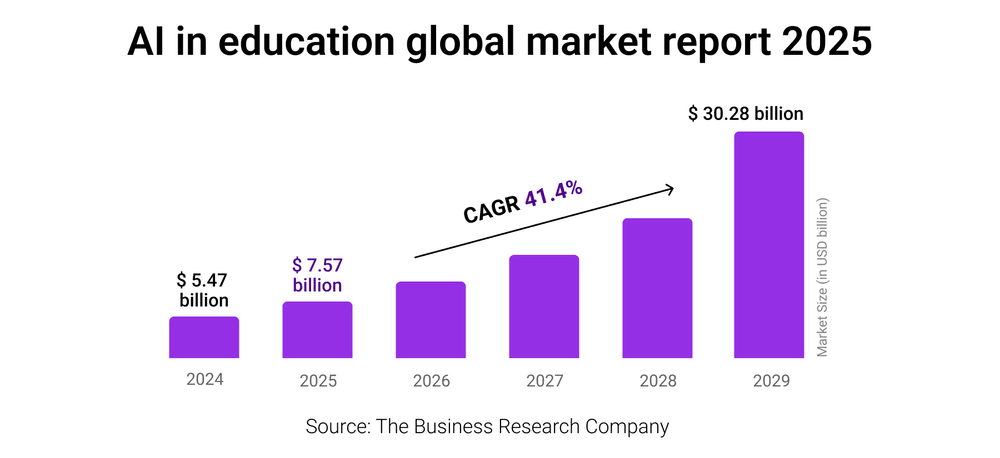
The sector’s digital transformation has driven the adoption of on-premises AI, enhancing learner engagement and boosting revenue through new conversational channels.
An increasing reliance on digital reinforcement fuels the following key applications:
- Learning platforms and virtual facilitators,
- Intelligent tutoring systems,
- Smart content aggregation,
- Fraud and risk management, and more.
How does AI impact the educational process, and what benefits does it bring along?
In a separate large article, we discussed the pros and cons of using AI in education in detail; here we want to focus on the most recent opinions of users.
For 42% of educators who are active AI users, saving time on administrative tasks is the biggest benefit. 25% highlight personalized learning experiences, while 18% see improved student engagement. 17% report better student learning outcomes, and 6% notice improved classroom management.
Only 1% noted no benefits at all.
However, educational institutions themselves do not seem to have a clear stance on AI adoption.
40% remain undecided about how to use AI. For 31%, the decision depends on a specific use case, while 22% accept generative AI. Another 3% are uncertain about their position on the technology, and only 3% are prepared to ban it completely.
Teachers and AI: assistance or replacement?
Researchers estimate that 60% of teachers are actively using AI-based tools in their daily work.
Most teachers see AI as a reliable copilot with ChatGPT, MagicSchool, Canva, Google Translate, and Google Bard as the most favorite AI tools. Interest in the rising star DeepSeek is also growing fast.
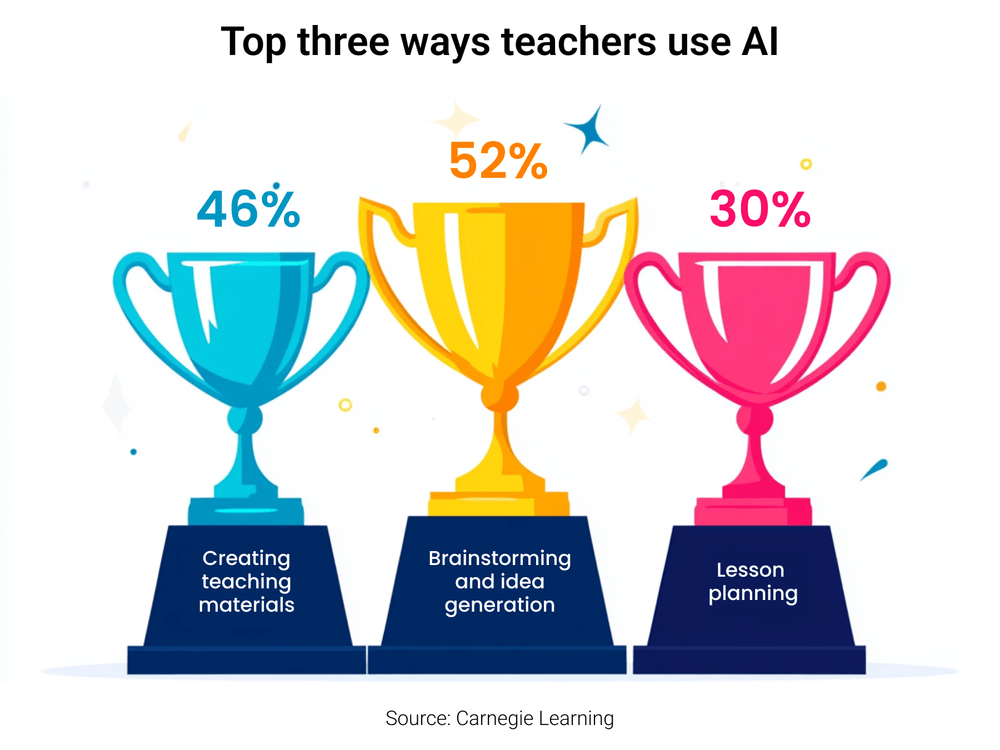
AI assists teachers in assessing knowledge, generating diverse tests, summarizing materials for easier review, and more. Microsoft experts say AI-based tools could take up to 45% of routine tasks off teachers’ hands to enable them to devote more time to students.
Case study: how AI-based quiz generator saved over 90% of educators’ time
Aristek’s team integrated an AI-driven quiz generator with the existing e-learning platform. This solution saves a ton of time for content creators who now don’t have to design/produce tests from scratch.
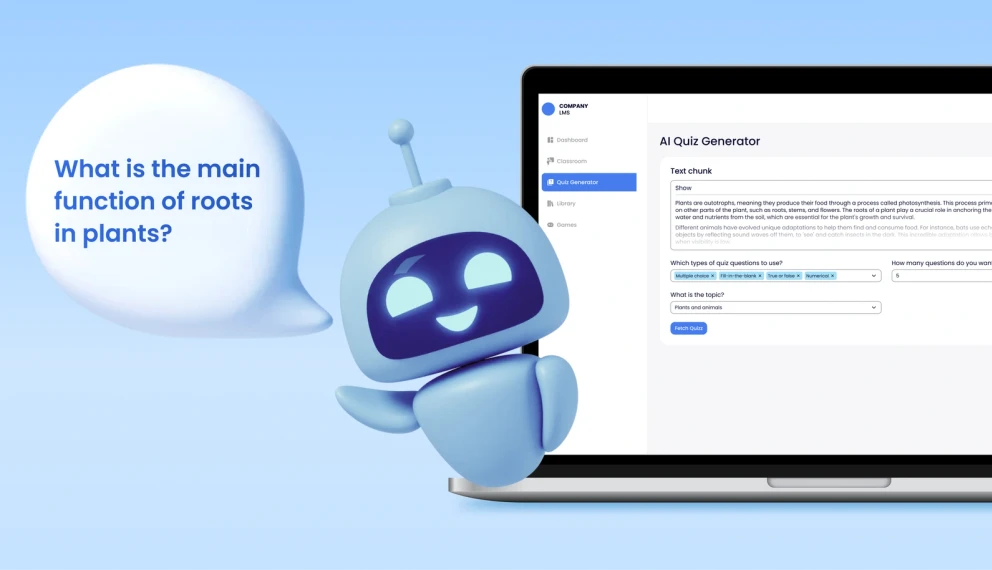
However, as AI becomes more widespread, many teachers are skeptical about the technology’s application in the classroom, and this trend is likely to continue.
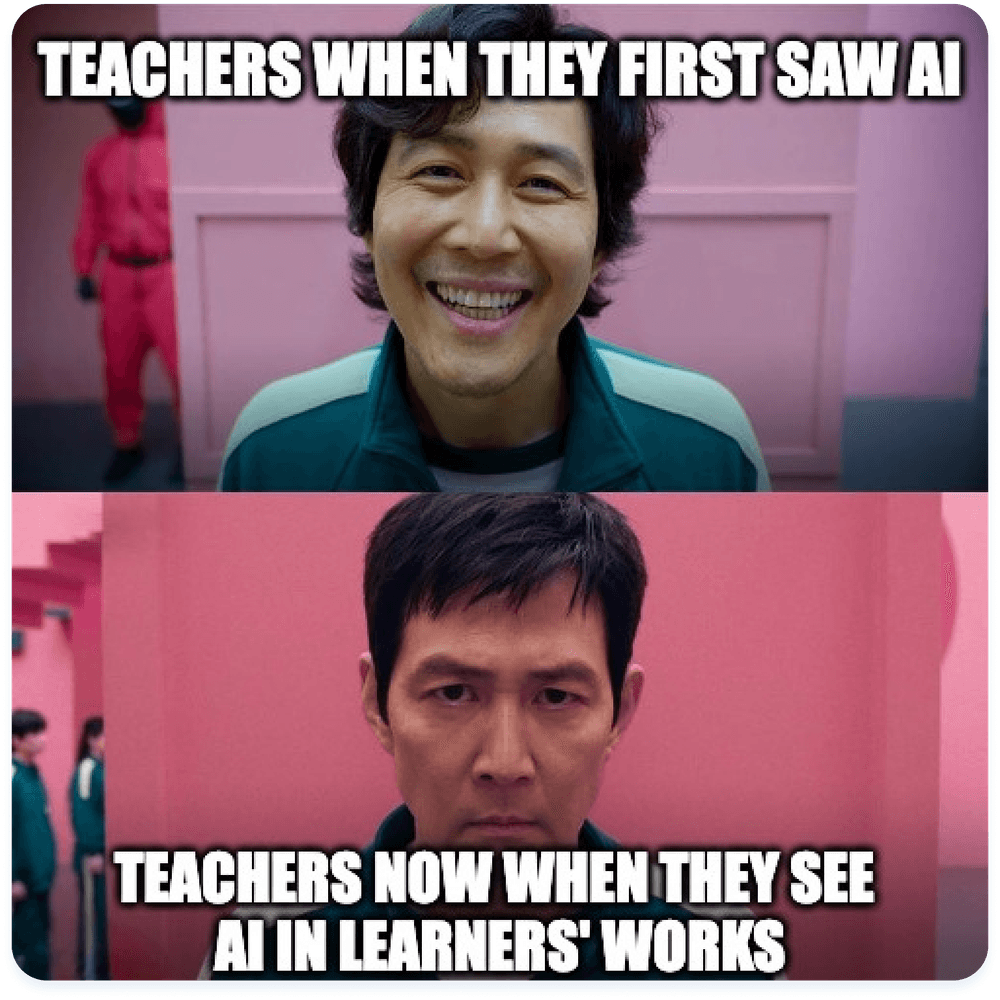
The above problems were anticipated as early as 2023. Stanford University’s 2023 Artificial Intelligence Index Report highlights that in the field of education, generative AI is already a cause for concern for many educators, as the technology can be used in a variety of harmful ways:
- Plagiarism of written content
- Artificial works of art
- Translation
- Bypassing plagiarism software
- Use in unsupervised examinations
- Programming, and more.
The concerns continue to be confirmed. The Forbes study confirmed that plagiarism was and still is the most disturbing factor for teachers.
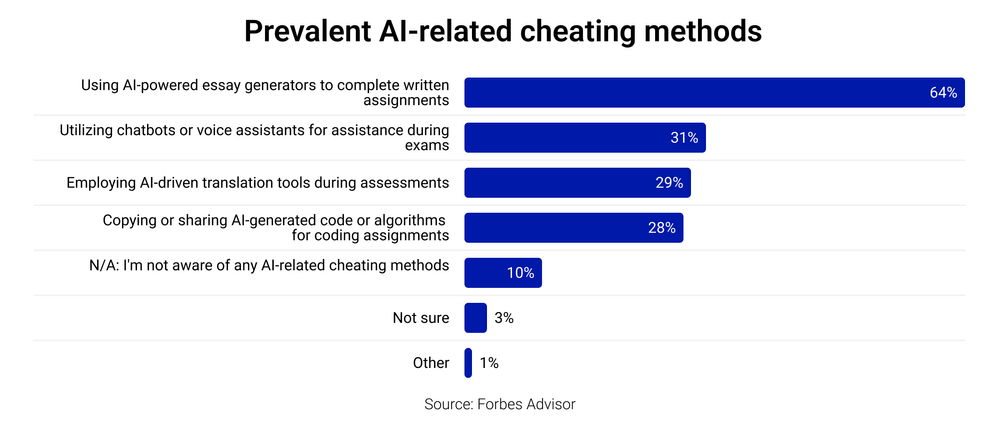
Over 81% of educators worry about learners’ cheating. And given that 86% of students admitted to using AI for self-study (of which 54% do so regularly) – teachers’ concerns may not be unfounded.
Therefore, teachers must ensure that students understand the negative impacts of using AI alongside the benefits.
It is important to underline the importance of originality in students’ work, and there are several ways educators can encourage this:
- Oral presentations
- Project-based learning assessments
- Plagiarism detection and AI detection tools
AI and data security
Educational institutions worldwide have become prime targets for cybercrime. According to Check Point’s 2025 Cyber Security Report, weekly attacks have surged by 75%, reaching 3,574 attacks year-on-year.
Another report reveals that the median ransom payment was $6.6 million for lower education and $4.4 million for higher education organizations. Additionally, 55% of lower education respondents and 67% of higher education respondents paid more than the initial ransom demand.
With 51% of educators expressing concern, the topic of personal data security in educational institutions continues to be a highly debated issue.
The biggest worry about AI in education is the potential for new types of cyberattacks. A striking 63% of CoSN survey respondents are extremely or very concerned about this threat.
Additionally, nearly 49% fear that teachers aren’t properly prepared to implement AI in the classroom, raising concerns about both security and readiness.
Surprisingly, the majority of CoSN respondents do not believe their district is at high risk for any of the cyber threats (which can include phishing, ransomware, password attacks, DDoS, and many more).
Although phishing scams are seen as the biggest threat, only 26% of respondents consider them “high risk”, while “20%” view them as “low risk”.
Luckily, the industry isn’t standing still and is promoting reasonable measures to counterfire fraudsters.
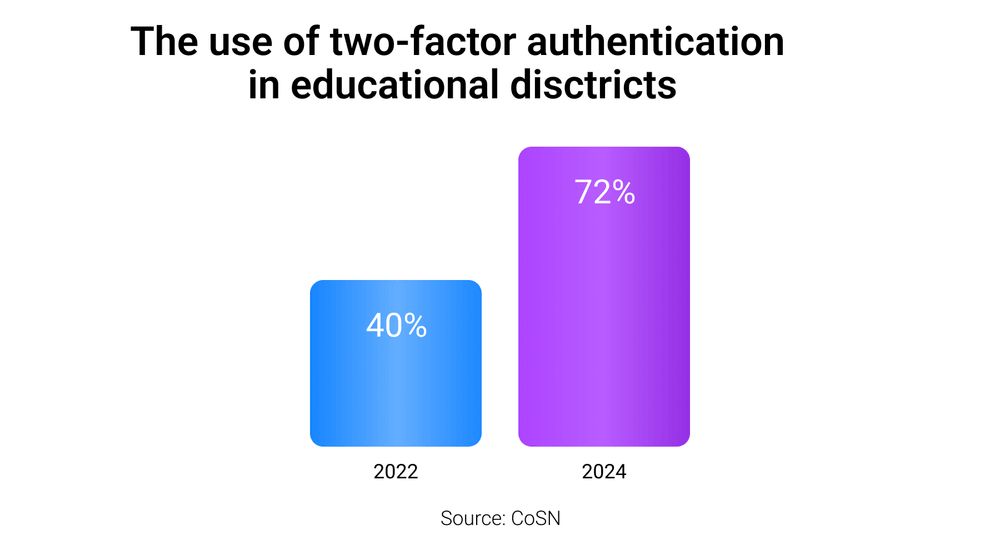
Measures like regular security audits, data encryption protocols, and spreading awareness across administrations, are slowly paying off. While only 34% of institutions had a cybersecurity plan in 2022, more than half (53%) now have such a plan.
For an in-depth look at all the precautions within the safe use of AI, check out our dedicated whitepaper.
Regulatory considerations
The year 2025 is a watershed year for regulating technology in educational institutions.
Due to their high performance and widespread use, AI systems can pose serious risks, especially if they are misused. In addition to targeted manipulation, fraud, deception, or deepfakes, this also includes unjustified disadvantages or discrimination against certain groups of people.
Thus, the need for government regulation is long overdue.
The EU AI Act passed in March 2024, became the first comprehensive regulation of AI. It ensures the safe and ethical use of AI in schools through a two-step approach:
- From February 2025, mandatory training will be required for everyone working with AI.
- From August 2026, classification rules for high-risk AI systems will take effect.
The obligation to ensure AI competence applies to all educational organizations that use AI systems professionally, not just to AI system providers.
As a result, adult education institutions must also take action if they use AI, whether in courses, administrative support, or management.
The Aristek team experts have shared a few recommendations for such actions below.
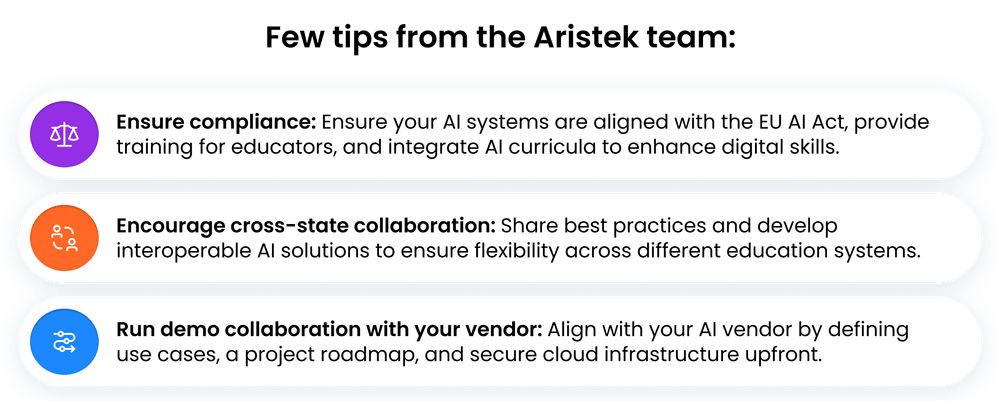
Ensuring that AI is used responsibly requires addressing key challenges that threaten its ethical implementation. Issues such as bias, misinformation, and privacy violations must be addressed head-on to build trust and fairness in AI systems in schools.
With proper design, transparency, and collaboration, AI can cross boundaries while adhering to human values and ethics.
Preparing for AI implementation
Educational institutions looking to adopt AI tools highlight some of the obstacles.
Despite individual cases of AI tools being used, most educational institutions (15% of those surveyed, to be exact) lack a comprehensive AI strategy. 42% had a strategy in place, but it was not successfully aligned with the overall educational institution’s strategic goals.
As soon as the median ransomware recovery cost for education hits $3 million, having a solid strategy that considers all safety aspects of the technology’s use is a must.
Here are five ways the Aristek team can help you define your needs and tailor your AI strategy accordingly:
- Help you make sure you’re at the right stage of AI implementation readiness and anticipate collateral pitfalls.
- Develop AI tools tailored to your needs, such as AI chatbots, smart document assistants, AI highlights generators, and more.
- Help integrate AI into your existing systems for enhanced functionality and significant performance optimization.
- Consult on how to automate routine tasks to save time and increase productivity, like customer support or workflow management.
- Apply AI to analyze your data, and organize it properly so it will consistently provide actionable insights for educational providers and content creators.
And that’s just part of our expertise. to schedule a consultation and start your AI transformation today.
In a nutshell
Given the explosive growth in popularity of the technology, the focus should first and foremost be on how we can make AI more efficient and resource-efficient, how ML can get more out of less training data and generalize better, and how we can make AI systems more understandable and transparent.
Working on AI has always been a way to deepen one’s practical understanding of human intelligence and get to the bottom of the nature of cognition. And the market situation confirms it: the sky is the limit for discoveries.




